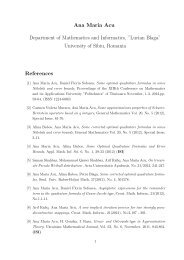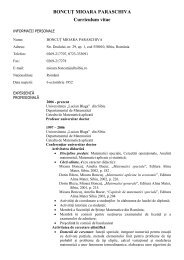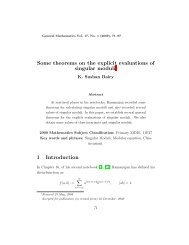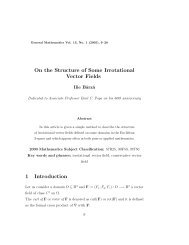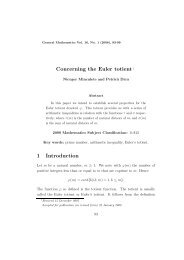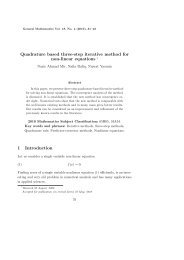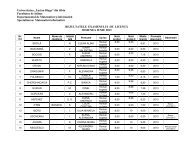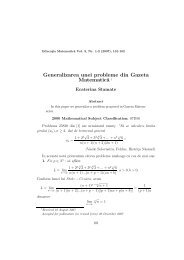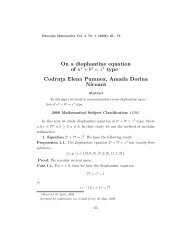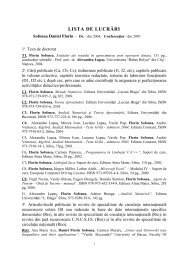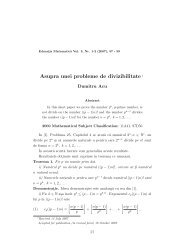Certain Convolution Properties of Multivalent Analytic Functions ...
Certain Convolution Properties of Multivalent Analytic Functions ...
Certain Convolution Properties of Multivalent Analytic Functions ...
You also want an ePaper? Increase the reach of your titles
YUMPU automatically turns print PDFs into web optimized ePapers that Google loves.
<strong>Certain</strong> <strong>Convolution</strong> <strong>Properties</strong> <strong>of</strong>... 45<br />
Lemma 1. (see [4,5]) Let g(z) be analytic in U and h(z) be analytic and<br />
convex univalent in U with h(0) = g(0). If<br />
(1.12) g(z) + 1 µ zg′ (z) ≺ h(z),<br />
where Reµ ≥ 0 and µ ≠ 0, then g(z) ≺ h(z).<br />
Lemma 2. (see [6]) Let ρ < 1, f(z) ∈ S ∗ (ρ) and g(z) ∈ R(ρ). Then, for<br />
any analytic function F (z) in U,<br />
g ∗ (fF )<br />
(U) ⊂ co(F (U)),<br />
g ∗ f<br />
where co(F (U)) denotes the closed convex hull <strong>of</strong> F (U).<br />
2 Inclusion <strong>Properties</strong> Involving the Operator<br />
I λ<br />
p (a, c)<br />
Theorem 1. Let 0 ≤ α 1 < α 2 . Then<br />
B λ p (a, c, α 2 ; h) ⊂ B λ p (a, c, α 1 ; h).<br />
Pro<strong>of</strong>. Let 0 ≤ α 1 < α 2 and suppose that<br />
(2.1) g(z) = z −p I λ<br />
p (a, c)f(z)<br />
for f(z) ∈ B λ p (a, c, α 2 ; h).<br />
Then the function g(z) is analytic in U with<br />
g(0) = 1. Differentiating both sides <strong>of</strong> (2.1) with respect to z and using<br />
(1.11), we have<br />
(2.2)<br />
(1 − α 2 )z −p I λ<br />
p (a, c)f(z) + α 2<br />
p z−p+1 (I λ<br />
p (a, c)f(z)) ′<br />
= g(z) + α 2<br />
p zg′ (z) ≺ h(z).



